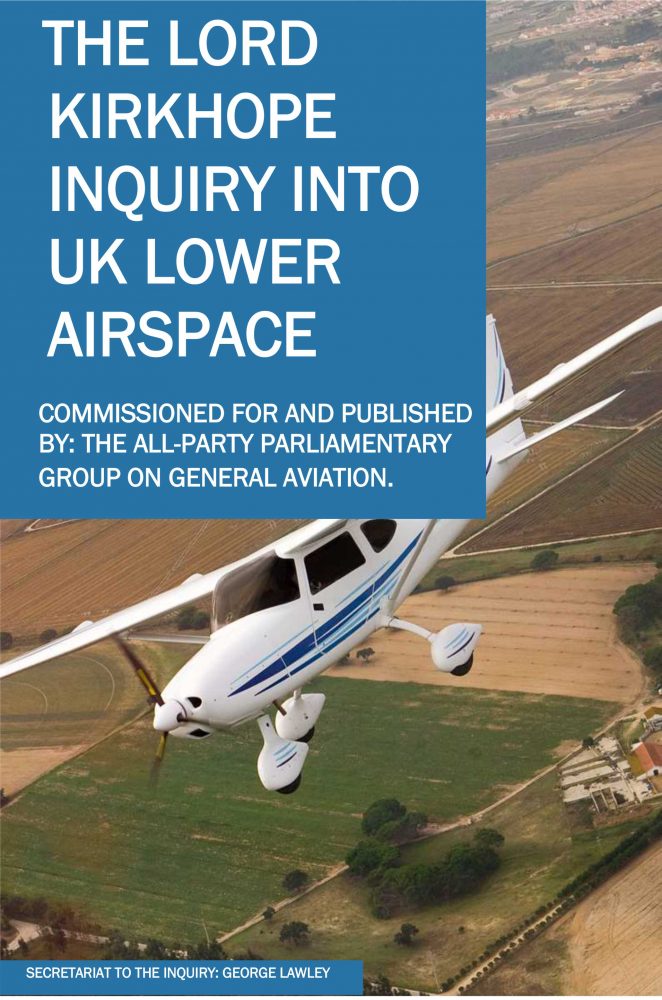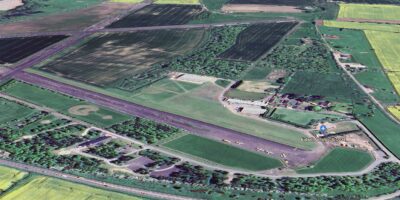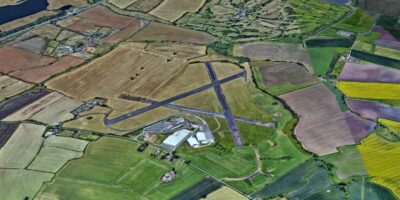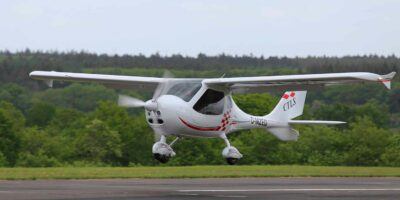“It has been clear to everyone in the aviation community, for some time, that the current Airspace Design Process is unfit for purpose and as a result the UK has one of the most complex airborne environments in the world.”
That hard-hitting conclusion is how Lord Kirkhope of Harrogate introduced the report of the All-Party Parliamentary Group on General Aviation (APPG-GA) into the UK’s lower airspace.
The report follows a months-long comprehensive Inquiry involving interests from across aviation. The Inquiry calls for the Government to scrap and replace the legislation that sets the direction for UK lower airspace design.
“The outdated legislation and complex guidance that comes from it, has created a system that is overburdensome and potentially dangerous for future airspace users, ” said Lord Kirkhope.
The expert panel recommended that the Department for Transport and the CAA base their airspace policy on the principles of ‘safety, proportionality and need’.
The Inquiry also called for the introduction of a ‘ratchet down’ process for removing underused volumes of controlled airspace, and that the CAA make a radical shift in its internal processes for airspace change to allow for greater flexibility in future airspace decision making.
Chair of the APPG-GA, Grant Shapps MP, said, “The 222 MPs and Lords of the APPG-GA welcome the new report published today. Their findings confirm the suspicions my colleagues and I have held about what is going wrong with the airspace design in this country.
“We are very grateful to our expert panel for their sterling efforts to produce this important piece of work.”
The full report can be downloaded here
Executive Summary of the report
4.1 The current Airspace design model, on all levels, is unfit for purpose. The Department for Transport should seek to radically change or replace Section 70 and the CAA should replace all relevant guidance. This should lay out clear direction and objectives, as well as the methodology used to arrive their conclusion.
4.2 The CAA should look to radically change the policy objective behind airspace design changes. The Inquiry recommends that the Department for Transport and the CAA adopt, or base their policy on, ‘safety, proportionality and need’.
4.2 The CAA should look to ensure that all future airspace proposals make the most efficient use of airspace. The most obvious way this can be achieved is through the introduction of a ratchet down process for classed airspace. This would give the CAA the powers to either lower the class of controlled airspace or make airspace uncontrolled.
4.3 The Government should seek to extend the powers of the CAA, so they can make formal alterations to Airspace Applications. This will bring Airspace into line with all other forms of infrastructure and planning processes. Planning applications in the UK can be altered by the local planning authority and the CAA should be given equivalent powers to make alterations to airspace design proposals.
4.4 The CAA should remove airspace design changes from an individual process internally to a corporate one. This will allow for a more transparent design system, that will see input from broader points of view, thus giving greater scrutiny and better recommendations. This board must have indemnity from prosecution in case an accident deemed to be due to airspace design were to occur but follow the policy and guidance as set out in Section 70.
4.5 The CAA should have an independent review procedure, which must be undertaken after the implementation of an airspace change after 12 months and 3 years of a proposal being implemented. This review must look to match the criteria and reasoning given at the time of the change and look to see if this has been achieved, and if not, why not? The board must also have the power to revoke an airspace design change proposal.
4.6 The Department for Transport should immediately exempt the Airspace Department at the CAA, from the 3% financial return requirement. The Department for Transport and Her Majesty’s Treasury must ensure that the Airspace Design team has adequate resources to ensure that Post Implementation Reviews (PIRs) can occur in the required timeframe.
4.7 The CAA should implement a more flexible approach to airspace design. Looking at factors including the power to ‘turning on and off’ of Airspace depending on the time of day and time of the year. The Inquiry recognises that this is already being done through the Airspace Modernisation Strategy, but this requires expediting and introducing.
4.8 All pilots of all kinds of aircraft, must remember that a large burden remains on them. If they want a more flexible airspace system, pilots must be willing to follow the rules and keep up to date with any and all changes.













1 comment
Maybe this report will help speed up the judicial review conclusion into Farnborough which concluded 7 June 2019.